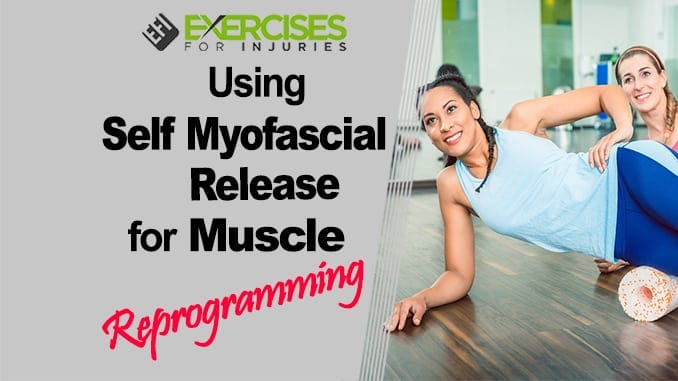
Myofascial release is a soft tissue massage that reduces restrictions in your muscle fibers and increases your range of motion. Research shows that myofascial release can help with pain, swelling, performance, and post-workout recovery. Self-myofascial release techniques are easy to do and can be done anywhere! They’re also known as self-massage or trigger point therapy. Using these effective techniques can be highly beneficial for increasing flexibility and relieving muscle tightness.
What is Myofascial Release?
Myofascial release is a type of hands-on soft tissue release technique used by sports massage and physical therapists to treat soft tissue restrictions. These restrictions can be caused by injury, poor posture, stress, poor exercise technique, etc. Myofascial release aims to align better fascia, the connective tissue surrounding muscles, joints, and other organs. It also increases blood flow to the target area and positively impacts joint mobility and muscle function. There are three types of myofascial release techniques: Moderate pressure massage, also known as effleurage. Deep pressure massage, also known as petrissage. And Brisk pressure massage, also known as tapotement. The pressure applied during myofascial release can be light-moderate to firm, depending on the technique.
Benefits of Self Myofascial Release Techniques
Did you know that massage therapy reduces stress, improves sleep, and decreases the likelihood of injury? The great news is that using self-myofascial release techniques can reap these benefits at home.
Here are a few of the benefits you can expect from the self-myofascial release:
1. Improved flexibility
Myofascial release helps break up adhesions and scar tissue, restricting the joint range of motion and causing pain.
2. Improved blood flow
Myofascial release can increase blood flow to the area, which can help to reduce inflammation.
3. Improved posture and proprioception
The regular myofascial release improves posture by correcting the imbalance in muscle tone and increasing joint range of motion. The standard myofascial release improves posture by correcting the imbalance in muscle tone and increasing joint range of motion.
4. Increased strength and performance
Myofascial release can increase the rate of muscle growth by enhancing the muscle environment. This can help to reduce the time your muscles require to repair and increase strength.
I’ve got another video from you from Conor Collins. In this video, Conor talks about using Self Myofascial Release for Muscle Reprogramming.
One of the things that we talk about in Trigger Point Solution is the concept of the new normal.
Soft tissue work and Self Myofascial Release are two methods we can use as strength coaches or rehabilitation specialists to help our clients improve their mobility and range of motion.
We are attempting to establish a new standard of care. During the rehabilitation phase, we must adequately address the patient’s soft tissue issues to allow the nervous system to reprogram and achieve a new level of strength, mobility, flexibility, or movement patterns.
Using Self Myofascial Release for Muscle Reprogramming
What is Dysfunction?
Our day-to-day activities are responsible for our sitting in dysfunctional positions if we look at what we do in our daily routines. Furthermore, not only sitting but also inadequate movement patterns, low strength, poor flexibility, and poor mobility may result in dysfunction.
When we perform trigger point therapy or Self Myofascial Release, we get the body into a new normal state where we can reprogram it more effectively since we are freed from dysfunction.
How to correct it?
Using trigger point therapy and Self Myofascial release, we move through steps and strategies to program our rehab correctly and effectively. It will take less time if we want to rehabilitate ourselves to a dysfunctional state.
Suppose you are a health and fitness professional and would like to understand better how to assess and what to do about trigger points, then I recommend Trigger Point Solution Program. It’s a fantastic resource.
If you have any questions, certainly email me at [email protected].
Take care and bye, bye.
Rick Kaselj, MS
If you liked the video above, here is another one for you:
Avoid this Trigger Point Mistake

